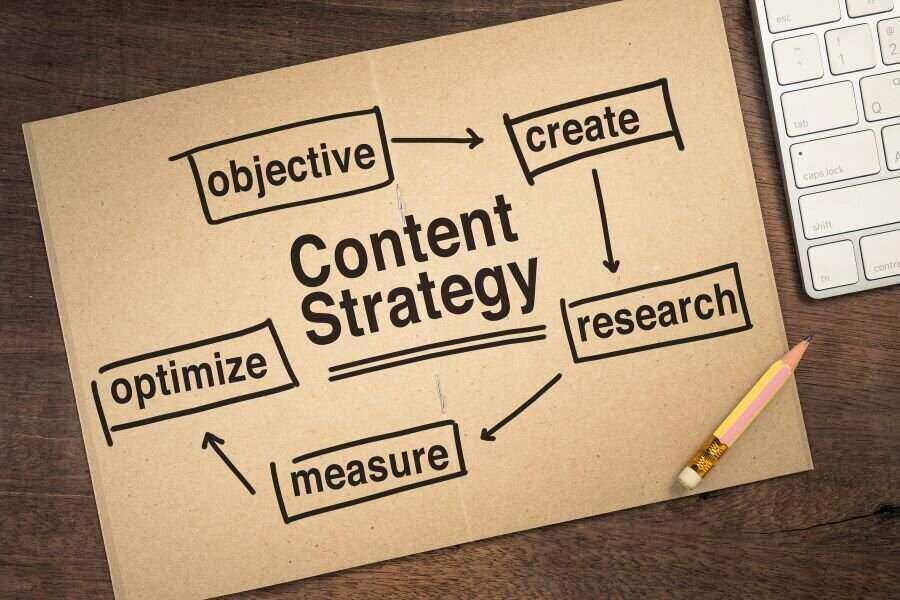Generating prospects or leads is a critical aspect of any business’s growth strategy. The ability to attract, convert, and retain customers is what sets successful businesses apart. However, lead generation can often seem daunting, especially in a competitive marketplace.
What Is Lead Generation?
Lead generation pertains to attracting and converting consumers into potential customers. These are people who have indicated interest in your company’s product or service. It is a fundamental aspect of marketing, especially in the business-to-business (B2B) and business-to-consumer (B2C) sectors. The primary goal is to capture information from potential customers (leads), which can then be used to guide them through the sales funnel.
Key Elements of Lead Generation
- Awareness: Prospects become aware of your brand, product, or service.
- Interest: They show interest by interacting with your content or marketing efforts.
- Consideration: Leads evaluate your offerings and compare them to competitors.
- Conversion: They take action, such as filling out a form, signing up for a newsletter, or making a purchase.
An effective marketing automation strategy can significantly enhance the lead generation process. By automating repetitive tasks and utilizing sophisticated analytics, businesses can better nurture leads through personalized content and timely follow-ups. This not only improves efficiency but also ensures a more consistent and engaging experience for potential customers, ultimately increasing the likelihood of conversion.
Here are 10 steps to optimize your lead generation process effectively:
Step 1: Define Your Ideal Customer Profile
The first step in improving how you find new customers is to clearly know who your ideal customer is. This means having a detailed description of the type of person who would get the most benefit from your product or service and who would be most valuable to your business.
How to Define Your ICP:
- Demographics: Age, gender, income, education level.
- Firmographics: Company size, industry, job role.
- Behavioral Traits: Buying behavior, decision-making process, preferred communication channels.
- Pain Points: Challenges and problems your product/service solves for them.
Having a well-defined ICP helps in targeting the right audience and ensures that your marketing efforts are not wasted on unqualified leads.
Step 2: Develop High-Quality Content
Content is the cornerstone of effective lead generation. High-quality content attracts, engages, and nurtures potential leads through the buyer’s journey. Tailor your content to resolve the needs and pain points of your ICP.
Types of Content to Create:
- Blog Posts: These are informative or educational articles that address common questions and issues in your industry.
- E-books and Whitepapers: In-depth guides and reports that provide valuable insights.
- Webinars and Videos: Interactive and visual content that engages viewers and builds trust.
- Case Studies and Testimonials: Real-life examples of how your product or service has helped others.
Produce high-quality content to position your business as a thought leader and builds credibility with your audience through content marketing.
Need help optimizing your lead generation process?
Contact Growth Hackers
Step 3: Utilize SEO and SEM Strategies
Search engine optimization is integral for driving organic or unpaid traffic to your website. Search engine marketing (SEM), on the other hand, provides you paid traffic to help attain your short-term goals.
SEO Strategies:
- Keyword Research: You have to use relevant keywords that your target audience is searching for.
- On-Page SEO: Ensure to add relevant keywords to your website’s content, meta tags, and images for search engines.
- Technical SEO: A mobile-friendly website is one that has a fast loading speed and secure (HTTPS) connection.
- Off-Page SEO: A link building strategy is crucial. Improve your search engine ranking by acquiring high-quality backlinks from other websites.
SEM Strategies:
- Pay-Per-Click (PPC) Advertising: Create targeted PPC ads to drive traffic to your website.
- Retargeting Campaigns: Reach out to visitors who have previously visited your site but didn’t convert.
A well-executed SEO and SEM strategy will increase your website’s visibility and attract high-quality leads.
Step 4: Leverage Social Media
These platforms provide a way to connect with your audience, share valuable content, and engage potential leads in real-time.
Social Media Strategies:
- Content Sharing: Regularly post and share your content on social media platforms.
- Engagement: Respond to comments, messages, and engage in conversations with your followers.
- Advertising: Use targeted ads on social media to reach specific demographics and interests.
- Social Listening: Monitoring social media sentiments and conversations can help you determine your audience’s needs and pain points.
Leveraging social media effectively can significantly expand your reach and generate more leads.
Step 5: Launch Your Email Marketing Campaigns
Marketers and salespeople must nurture potential customers by providing them with personalized communication.
Email Marketing Strategies:
- Build a Quality Email List: Use free e-books, webinars, or discounts to encourage sign-ups.
- Segment Your Target Audience: Categorize your email recipients based on their demographics, behavior, or interests.
- Personalize Your Emails: Use personalized subject lines and content to increase open rates and engagement.
- Automate Your Campaigns: Automate your campaigns and follow-up sequences using email marketing software.
Regularly monitoring and analyzing your email campaigns can help in the proper execution of your campaigns.
Step 6: Optimize Your Website for Conversions
This is crucial to turning visitors into leads, where your brand citizen ambassadors will come from.
Website Optimization Strategies:
- Landing Pages: Dedicated landing pages for your campaigns must have clear and compelling calls-to-action (CTAs).
- Forms: Use simple and intuitive forms to capture lead information.
- User Experience (UX): Ensure your website is intuitive, visually appealing, and provides a seamless experience.
- A/B Testing: Continuously test different elements of your website, such as headlines, images, and CTAs, to see what works best.
A web designer can help ensure the usability of your website. Many digital marketing agencies also offer web design services as a part of their package suite.
Step 7: Utilize Data and Analytics
By tracking and analyzing data, one can obtain insights into what’s working and what’s not, and make informed decisions to improve your strategy.
Data and Analytics Strategies:
- Track Key Metrics: Monitor metrics such as website traffic, conversion rates, click-through rates (CTR), and return on investment (ROI).
- Use Analytics Tools: Utilize analytics tools to track and analyze your data.
- Identify Patterns: Detect patterns and trends in your data to understand your audience’s behavior.
- Make Data-Driven Decisions: Refine your lead generation strategies using the insights gained from your data.
Regularly reviewing your data and making adjustments based on your findings will help you continuously improve your lead generation process.
Optimize your lead generation process today!
Step 8: Collaborate with Sales Teams
Sales and marketing teams must work together to ensure a seamless process from lead generation to conversion.
Collaboration Strategies:
- Define Lead Qualification Criteria: Establish clear criteria for what constitutes a qualified lead.
- Lead Scoring: This involves setting parameters to prioritize leads based on their likelihood to convert.
- Regular Communication: Hold regular meetings between marketing and sales teams to discuss progress, challenges, and strategies.
- Feedback Loop: Sales teams must provide feedback on lead quality and marketing teams adjust their strategies accordingly.
Effective collaboration among marketers and salespeople significantly improve lead generation results.
Step 9: Utilize Customer Relationship Management (CRM) Systems
A customer relationship management (CRM) system is essential for managing your leads and optimizing your lead generation process. It helps you track interactions with leads, manage customer relationships, and streamline your sales process.
CRM Strategies:
- Choose the Right CRM: Select a CRM system that meets your business needs and integrates with your existing tools.
- Automate Processes: Use the CRM to automate tasks such as lead nurturing, follow-ups, and reporting.
- Track Lead Interactions: Keep a record of all interactions with leads, including emails, phone calls, and meetings.
- Analyze Data: Use the CRM to analyze data and gain insights into your lead generation performance.
A robust CRM software program can help you manage your leads more effectively and optimize your lead generation process.
Step 10: Continuously Improve and Adapt
The final step in finding new customers is to continuously improve and adapt your strategies. As the business world changes, it’s essential to stay ahead.
Continuous Improvement Strategies:
- Stay Updated: Regularly read articles, watching online seminars, and following experts in your industry. Staying informed helps you use the best and most effective methods.
- Experiment: Do not be afraid to uncover fresh ways to attract and convert leads. Whether you’re testing new content, trying different advertising platforms, or using new technologies, experimenting helps you find what works best for your business.
- Gather Feedback: Regularly seek feedback from customers and your team to identify areas for improvement. Customers can share what attracted them and what could be better, while your team can offer valuable perspectives on current strategies.
- Iterate: Keep improving your lead generation process based on the insights and feedback you collect. This means making small, continuous adjustments to boost performance. It could involve tweaking your messaging, adjusting your targeting, or optimizing your website’s user experience.
Continuously improving and adapting your lead generation strategies ensures long-term success and growth. Staying flexible and responsive to market changes helps you remain competitive and meet your customers’ evolving needs.
Final Thoughts About Steps to Optimize Your Lead Generation Process
To improve how you find new customers, you need a clear and organized plan. By following the above steps, you can attract good potential customers, turn them into actual buyers, and help your business grow. Remember, lead generation is ongoing, and continuous improvement is key to staying competitive.
Growth Hackers is a leading lead generation firm helping businesses from all over the world grow. There is no fluff with Growth Hackers. We help entrepreneurs and business owners optimize their lead generation process, increase their productivity, generate qualified leads, optimize their conversion rate, gather and analyze data analytics, acquire and retain users and increase sales. We go further than brand awareness and exposure. We make sure that the strategies we implement move the needle so your business grow, strive and succeed. If you too want your business to reach new heights, contact Growth Hackers today so we can discuss about your brand and create a custom growth plan for you. You’re just one click away to skyrocket your business.







